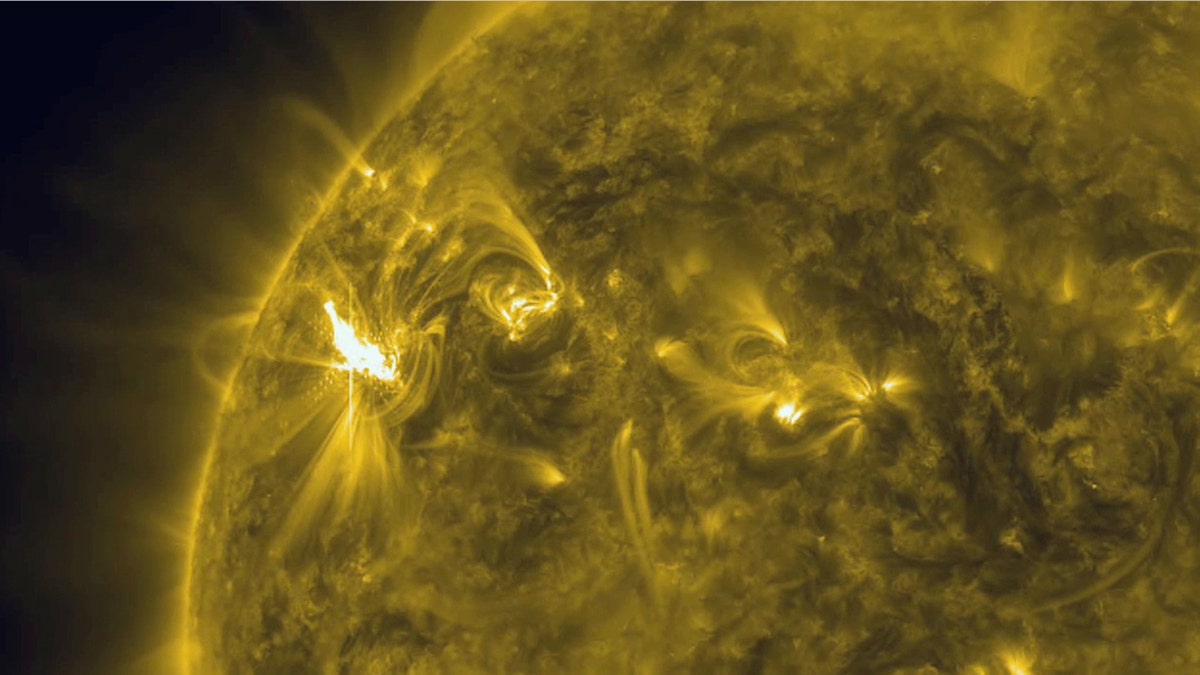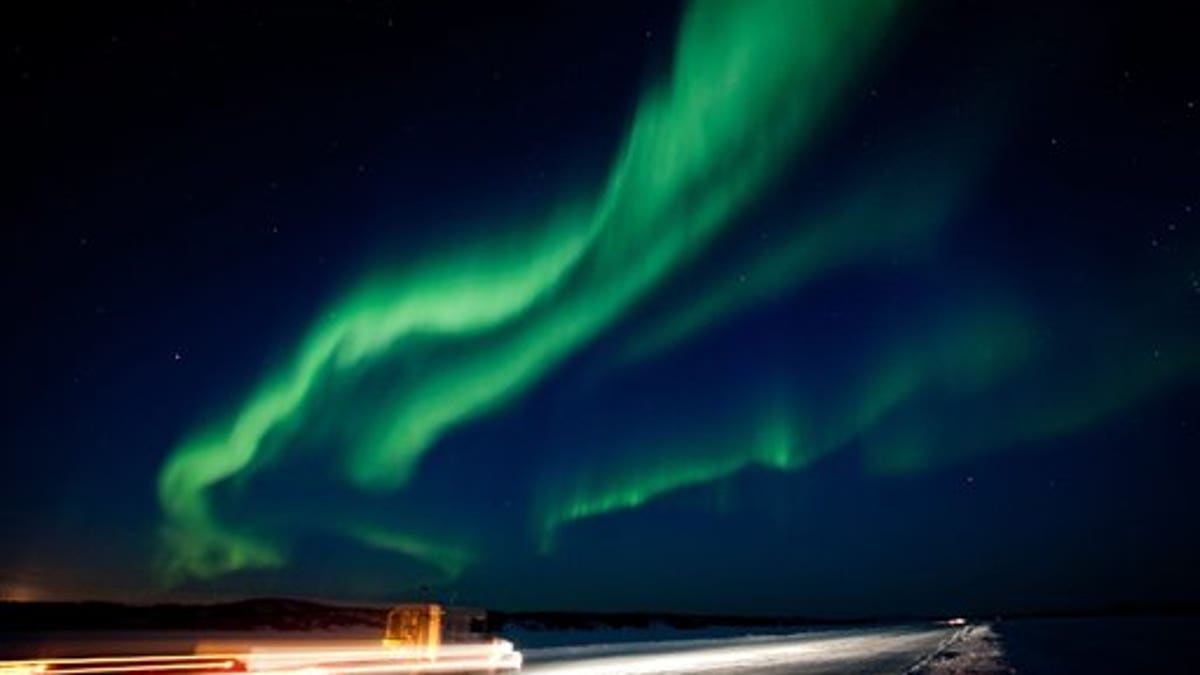
A solar storm — a disturbance in Earth’s magnetic field caused by changes in solar wind — is forecast to hit Earth this week. (REUTERS/NASA/SDO/Handout)
A solar storm — a disturbance in Earth’s magnetic field caused by changes in solar wind — is forecast to hit Earth this week, the Space Weather Prediction Center (SWPC) has warned.
The National Oceanic and Atmospheric Administration (NOAA) issued a G1 (minor) geomagnetic storm watch for Tuesday and Wednesday. The storm watch was issued "due to the arrival of a negative polarity coronal hole high speed stream," SWPC explained in a post online Sunday.
C. Alex Young, associate director for science in the heliophysics science division at NASA's Goddard Space Flight Center, wrote in a report published Monday that at least three "substantial" coronal holes — which demonstrate the Sun's magnetic field is exposed — were observed in the Sun last week.
NEW IMAGES SHOW HOW THE SUN CHANGES OVER A 22-YEAR CYCLE
"These are areas of open magnetic field from which high speed solar wind rushes out into space," Young explains. "This wind, if it interacts with [Earth's] magnetosphere, can cause aurora to appear near the poles."
Here’s what you need to know about solar storms — and how they can impact the Earth — before one potentially hits the planet.
Solar flares, coronal mass ejections and coronal holes

Magnetic storms on the surface of the Sun can cause what is known as “solar flares.” (AP)
Magnetic storms on the surface of the Sun can cause what are known as “solar flares.”
“A solar flare is an intense burst of radiation coming from the release of magnetic energy associated with sunspots,” according to NASA. “Flares are our solar system’s largest explosive events.”
If the storm is strong enough, it will cause a coronal mass ejection (CME).
“[CMEs] are huge explosions of magnetic field and plasma from the Sun’s corona,” the SWPC explained. “When CMEs impact the Earth’s magnetosphere, they are responsible for geomagnetic storms and enhanced aurora.”
This particular storm, however, was caused by a coronal hole stream.
"Other than a coronal mass ejection, a coronal hole high speed stream (CH HSS) arrives slowly with first a steady increase in the solar wind density over the course of a couple of hours," Space Weather Live says. "This increase of the solar wind density occurs because the faster solar wind bunches up the slower solar wind particles in front of it."
These holes allow solar wind to escape the Sun and enter space.
"As the CH HSS begins to arrive at Earth, solar wind speed and temperature increase, while particle density begins to decrease," NOAA says.
WHY THE SUN WILL SOON GET DIMMER
How do solar storms impact Earth?

A large solar storm sent a huge wave of radiation into earth's atmosphere creating a brilliant show of the aurora borealis in March 2012. (billbradenphoto 2012)
There are a variety of things that could potentially happen.
- The storm could increase the brightness and visibility of auroras, also known as the Southern or Northern Lights. ”Aurora may be visible at high latitudes, i.e., northern tier of the U.S. such as northern Michigan and Maine,” the NOAA said in an alert Wednesday.
- Regions may notice weak power grid fluctuations, though that’s unlikely to happen in this “minor” storm.
- Minor damage to Earth-orbiting satellites,”especially those in high, geosynchronous orbits” could occur, NASA says.
- High frequency radio waves could be “degraded,” NASA adds.
- A NASA study warns solar storms could confuse the internal compasses of marine mammals, causing an increase in strandings on beaches.
“Geomagnetic storms are more disruptive now than in the past because of our greater dependence on technical systems that can be affected by electric currents and energetic particles high in the Earth’s magnetosphere,” NASA explains.
Should we be worried?
Not really. This particular storm is catergorized as minor, but that doesn't mean it can't impact the Earth.
Solar storms are actually pretty common. On average, solar activity increases every 11 years, NASA scientists say, and there's an uptick in solar flares during these cycles.
Fortunately, Earth’s atmosphere and magnetic field keep us well-protected.
“Some people worry that a gigantic ‘killer solar flare’ could hurl enough energy to destroy Earth, but this is not actually possible,” NASA explained in a 2013 article online. "Even at their worst, the sun's flares are not physically capable of destroying Earth."
For years, people have lived through solar storms without harm.
"In general, the physical danger is low and controllable," CNET reported, citing the NOAA, after a solar storm struck Earth in March 2012. "The biological hazard inherent in solar and geomagnetic storms comes from the exposure to radiation, which is mainly a concern for astronauts and people flying at high altitudes."
The "explosive heat" from solar flares can’t directly hit our planet, but the flares can, however, cause plenty of disruptions (like the ones listed above).




















